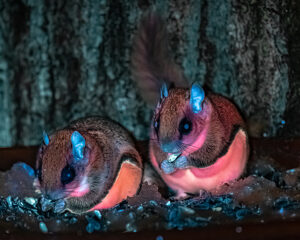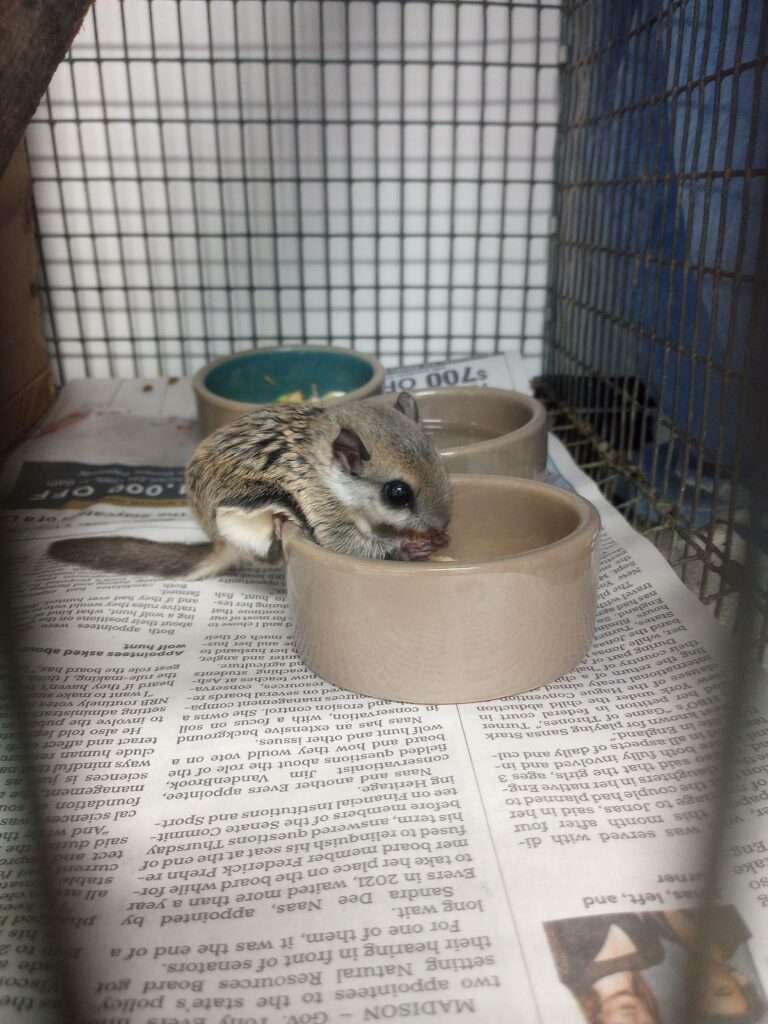Forest dwellers
These little rodents are very common here in our part of the Northwoods, but they often go unnoticed. The southern flying squirrel (Glaucomys volans) is one of three flying squirrel species found in North America. They are nocturnal, meaning they are active at night, and can be found in eastern North America, from southeastern Canada to Florida, and west from Minnesota to Texas.
They prefer deciduous and mixed forests habitats with lots of old trees that have cavities for nesting. Forests with seed-bearing hardwood trees like hickory, maple, beech, and poplar are especially enticing to them. They can also be found in small stands of conifers, especially where mature beech and oaks are nearby.
Nocturnal omnivores
Their distinctive large eyes and sensitive whiskers help them navigate their environment in the dark. Even though they don’t have “wings”, they are able to glide between trees using flaps of skin between their limbs, with their tail acting like a rudder to help them steer.
Southern flying squirrels eat a wide variety of food, including nuts and seeds, insects, buds, and fruit. They have even been known to eat carrion! The flying squirrels that we see here at Northwoods Wildlife Center seem to really enjoy sunflower seeds, acorns, and strawberries. We typically get between 5-10 orphaned or injured flying squirrels each year. They are very resilient little creatures, so they usually don’t have to stay with us too long before they are ready to be released!
Pink fur??
One very cool fact about southern flying squirrels is that they glow pink under ultraviolet light! This discovery was actually made right here in Wisconsin. Jon Martin, a professor at Northland College in Ashland, Wisconsin, was out in his backyard at night and happened to point his ultraviolet flashlight at a flying squirrel that was eating at his birdfeeder. To his surprise, the little furry creature glowed hot pink under the light!
Researchers aren’t exactly sure why flying squirrels have this ability, but a couple theories are that it might help them avoid predators by confusing them, or it may be a way to communicate with other flying squirrels. Either way, their hot pink fur sure looks stunning!
Photo by Judy Gallagher



